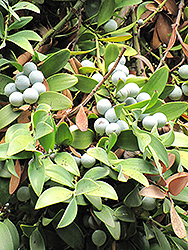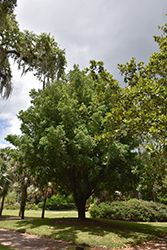Fri & Sat 8am - 8pm
Sun 8am - 7pm
Anytown, USA 12345
fax: 261.787.0463
e-mail: info@successgc.com


Plant Finder

Height: 50 feet
Spread: 25 feet
Sunlight:
![]()
![]()
Hardiness Zone: 8b
Other Names: Broadleaf Podocarpus, Nagi, syn. Podocarpus nagi
Description:
A loose, pyramidal tree with a strong central leader that may also be maintained as a screen or large shrub; leathery dark green leaves are elliptic to ovate and glossy; a beautiful accent tree, hedge, screen, or foundation plant
Ornamental Features
Asian Barberry is primarily valued in the landscape for its distinctively pyramidal habit of growth. It features subtle clusters of buttery yellow flowers at the ends of the branches from late winter to mid spring. It has attractive dark green evergreen foliage which emerges light green in spring. The glossy pointy pinnately compound leaves are highly ornamental and remain dark green throughout the winter. The peeling brown bark adds an interesting dimension to the landscape.
Landscape Attributes
Asian Barberry is a dense evergreen tree with a strong central leader and a distinctive and refined pyramidal form. Its average texture blends into the landscape, but can be balanced by one or two finer or coarser trees or shrubs for an effective composition.
This is a relatively low maintenance tree, and can be pruned at anytime. It is a good choice for attracting birds and squirrels to your yard. It has no significant negative characteristics.
Asian Barberry is recommended for the following landscape applications;
- Accent
- Mass Planting
- Hedges/Screening
- Container Planting
Planting & Growing
Asian Barberry will grow to be about 50 feet tall at maturity, with a spread of 25 feet. It has a low canopy with a typical clearance of 2 feet from the ground, and should not be planted underneath power lines. It grows at a slow rate, and under ideal conditions can be expected to live to a ripe old age of 100 years or more; think of this as a heritage tree for future generations! This is a dioecious species, meaning that individual plants are either male or female. Only the females will produce fruit, and a male variety of the same species is required nearby as a pollinator.
This tree does best in full sun to partial shade. It is very adaptable to both dry and moist locations, and should do just fine under average home landscape conditions. It is considered to be drought-tolerant, and thus makes an ideal choice for xeriscaping or the moisture-conserving landscape. This plant does not require much in the way of fertilizing once established. It is not particular as to soil pH, but grows best in poor soils. It is highly tolerant of urban pollution and will even thrive in inner city environments. This species is not originally from North America..
Asian Barberry is a fine choice for the yard, but it is also a good selection for planting in outdoor pots and containers. Its large size and upright habit of growth lend it for use as a solitary accent, or in a composition surrounded by smaller plants around the base and those that spill over the edges. It is even sizeable enough that it can be grown alone in a suitable container. Note that when grown in a container, it may not perform exactly as indicated on the tag - this is to be expected. Also note that when growing plants in outdoor containers and baskets, they may require more frequent waterings than they would in the yard or garden.

